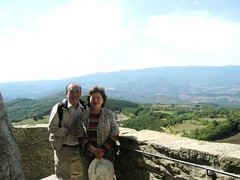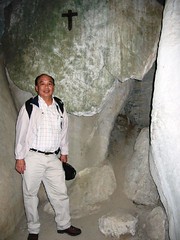Besides retracing St Francis footsteps, our Italian adventure brought us to the countryside of Umbria and Tuscany, to cities built on hills.
Amelia 7 Sep 2007 Amelia is the first of 5 cities built on hills that we visited. The common feature of such Italian hill cities is the wall that surrounds the city. Within the cramped space of city walls is a well preserved medieval city; peaceful and idyllic because it is not yet a favoured tourist destination. There is only one gate, the Porta Romana, that is accessible to traffic. We enjoyed walking along the narrow streets with shops and houses close to one another all built on the hillside. It was a refreshing and leisurely day of strolling, or rather climbing up the cobbled streets and peeking at the different quaint tightly clustered homes and shop houses and staring at ornate door knobs. Amelia overlooks the river Tiber to the east and the river Nera to the west. The Romans left their mark in Amelia in the form of arches, cisterns and as usual their famous Roman roads. The restaurant, the Loganda, where we had dinner had sections of its floor dug up to reveal the Roman road beneath.
If one choose to stay in such cities, the right choice is to stay within its walls and as high up at the top of the hill as possible. Which was what we chose when we stayed at
BB44 (SGD $132 for two persons). It is on via Schiopelia, high on the hillside so that we enjoyed a panoramic view of the rest of Amelia and the valley below. This is a picture of Pat outside BB44; imagine getting our 2 luggage bags up this slope for 100 metres!
Marie SygneScrive, who runs BB44 turned out to be a remarkable and accomplished woman. A Belgian who married an Italian, she is a woman for all seasons. She single handedly manages the B&B, including doing all the renovations, putting in the floor, windows, door, lightings etc. She is a retired actress and director of children's theatre. She is an artist too. She has lived in Morocco and Mauritius. She finally settled in Amelia living at this quiet place and bought a house on the hill to turn it to a B&B. We overcame our jet lags. It was a 12 hours' flight from Singapore and a 7 hours' time difference.
Marmore Waterfalls 8 Sep 2007
Believe it or not, the Marmore waterfalls are man-made. Located about 20 km from Amelia, it sends a thunderous amount of water over a cliff. Apparently in 271 BC the consul Curio Dentato ordered a canal to be dug in order to make the stagnant waters of the Velino river flow down onto the bed of the Nera river 165 metres below. By so doing he drained the swamp. At some point in time, the Italians tapped the kinetic energy for hydroelectricity.
Every morning at 10 a.m. the park authorities release the water and it gushes downwards in several cascades of waterfalls for tourists like us to admire. The price of admission was €4. Pat and I enjoyed the roar of the waters, the sprays and mist descending down on us. We climbed from the lower falls upwards; our hiking sticks bought in Austria came in handy. By the time we reached the top it was 1 p.m. and the sluice gates were closed. The water dwindled down to a trickle. There was an easy walk offering panoramic views of the Nera valley below. But it was getting hot and we had to press on to Assisi, so we took a shuttle service down the mountain.
Spoleto 10 Sep 2007We were travelling on the Via Flaminia from Amelia to Assisi when we chanced upon the ancient Ponte del Torri (the tower bridge) which was once an aqueduct. It spans across the highway. Then one could not miss the fortress set upon a hill which dominated the
town of Spoleto. Spoleto was the place where the young St Francis of Assisi was imprisoned as a prisoner of war
This fortress is the Rocca Albornoziana di Spoleto. It was once a castle, a papal palace, a governor’s mansion and finally, unbelievable as it may seem, a penal colony. The walls and ceilings were decorated with frescoes which were destroyed by the prisoners. It is very sad to see the ‘camera pinta’ or the decorated room in such stage and we wondered how colourful and impressive such a room must have been in its heyday.
We had entered the city and immediately negotiated the narrow streets uphill to the highest point where the Rocco is situated. When we parked the car we discovered that there is a Spoleto version of the restricted business district in which cars are not supposed to be on the road within the city walls from 4 p.m. to 6 p.m. We were stuck up there till 6 p.m.and decided to visit the sites namely the Cathedral and a Roman house built in the 1st Century AD. This ancient ruin was still relatively intact and we were rather impressed with the mosaic floors
Perugia 11 Sep 2007This is another city built on a hill. Outside the medieval walled city is a sprawling new metropolis. We drove into the city navigating very tight alleys ensuring always that the general direction is upwards. The problem was to find a parking lot. We were already fined €36 in Assisi after parking at a car park reserved for cars with special permits. There was no prohibition signs and local knowledge was required. We should have known that there could not have been free parking at a tourist attraction. It had cost us the price of dinner. This time we were
determined not to repeat the mistake. After much searching through the alleyways, we found a space at Piazza Anabeli Mennoti. There was a coin machine to which we added €1. When it provided 4 hours of parking we realised that the space is paid parking only from 1.30 p.m. The dilemma was it is free before that? We had no choice but to leave to grace of God and the mercy of the Carbiniere (the neighbourhood police)
From here it was a short uphill walk to the 'happening' piazza of Perugia, the Piazza IV November. This square is dominated by the Prior's Palace (town hall) and the Cathedral of San Lorenzo. The town hall is an outstanding example of medieval architecture. Inside its Gothic structure is a well decorated lawyers meeting hall and a museum of religious art. It has a large collection of madonna and child paintings. Also prominantly placed next to the cathedral is the Fontana Magiorre which is decorated with bas reliefs of common day to day medieval occupations. Perugia is the capital of Umbria.
Lake Trasimeno 12 Sep 2007
We arrived on a cool morning. All is quiet and the lake was rather still. Pat noted that the water level was rather low and the lack of currents causes overgrowing of algae making the water green. She remarked that this was a far cry from the blue clear waters of the Alpine lakes in north Italy or in Switzerland and Austria
Lake Trasimeno has a perimeter of 54 km. There are 3 islands on the lake, Polvese, Maggiore and Minore, We sat outside a cafe with the largest island Polvese in front of us sipping a cup of hot chocolate. The hot chocolate in Italy is served very thick and dark. We think it is made with a bar of dark chocolate melted in a microwave oven and then blended with frothy fresh milk. Delicious treat!
We took a boat, the Perugia, from a jetty in Passignano on the edge of the lake to the island of Magiorre and had a quick hike up the paths through very matured olive trees .jpg) to the small chapels around the island. These small chapels have a graceful charm about them. One fine example is the church of St Michael the archangel which still retains portions of the 14 and 15 Century frescoes on their walls. The warm afternoon breeze in the boat journey back made one rather sleepy, a testimony to the rather idyllic lifestyle of rural Italy. Gelati - there is nothing more refreshing in a hot afternoon that the taste of Italian ice-cream especially the ones made wth the fresh fruit in season, my favourite being the fragola or strawberries and Pat’s was melon.
to the small chapels around the island. These small chapels have a graceful charm about them. One fine example is the church of St Michael the archangel which still retains portions of the 14 and 15 Century frescoes on their walls. The warm afternoon breeze in the boat journey back made one rather sleepy, a testimony to the rather idyllic lifestyle of rural Italy. Gelati - there is nothing more refreshing in a hot afternoon that the taste of Italian ice-cream especially the ones made wth the fresh fruit in season, my favourite being the fragola or strawberries and Pat’s was melon.
Our last stop was Castiglione del Largo where we walked up to a medieval castle set at the waters’ edge. From the battlements we were presented with a panoramic view of Lake Trasimeno, the opposite shores and the islands. At the Palazzo della Corgna there were very well preserved frescoes. By the end of the day we had driven a complete
circle of the Lake.
Siena 13 Sep 2007.
Set in Tuscany, Siena is one of the most beautiful cities in Italy. One usually makes a beeline to the Piazza del Campo which was what we did but not before stopping at an ice-cream shop to have a double scoop on a cone. Set on three hills with the Piazza del Campo standing at the meeting point of the 3 ridges. It is a shell-shaped congregating area that is surrounded by buildings
This is where the
horse race or Palio is held twice a year on 2 Jul and 16 August. The various cantonments of Siena would be represented by teams of competitors dressed in medieval costumes in their colours and they would have a horse race over the outer perimeter of the Piazza. The winner of the palio would have its flags flown all voer the city. Predominant in the city is hall or Palazzo Pubblico, another fine example of Gothic architecture in the world. We visited the city museum which had on its walls an Allegory of good and bad government frescoes
The Duomo of Siena is another impressive cathedral. Its facade which includes niches, reliefs, spires and columns that stands out very impressively. But its interior contains the treasures of art by such masters as Donatello, Pinturrucchio, Bernini and Michelangelo amongst others. The floor of the Cathedral is a unique example of marble inlay. This floor is only exhibited from the end of August to the end of October and we count ourselves lucky to have the chance to see 56 scenes displayed on the floor
throughout the cathedral.
Siena is surrounded by olive groves and vineyards of the Chianti region. Pat and I took the opportunity to drive through this region enjoying the scenery till the sun set as we drove back to Assisi. We think that Siena is a good place to base oneself for a Tuscan experience, the city itself deserves at least 3 days of attention. Ciao!!




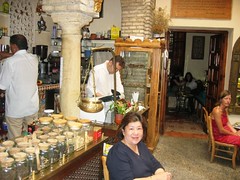



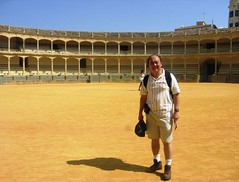

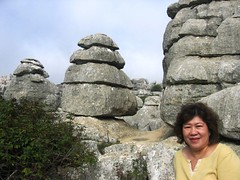

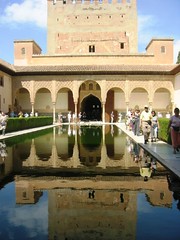

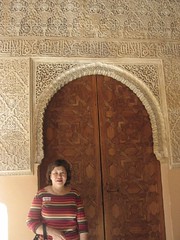
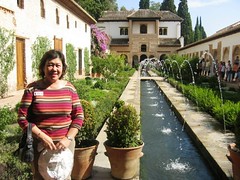

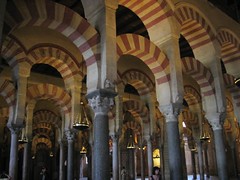
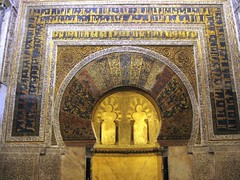

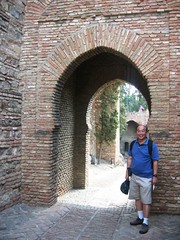

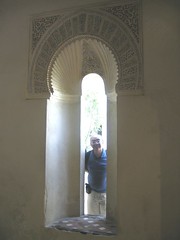


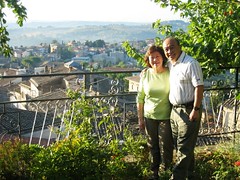
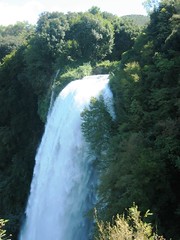
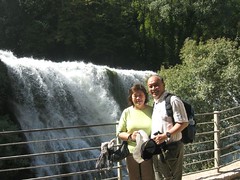
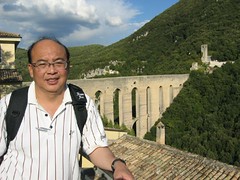
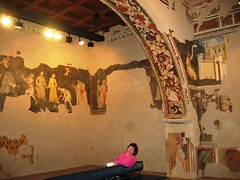
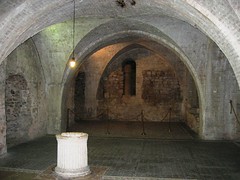
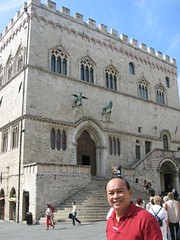
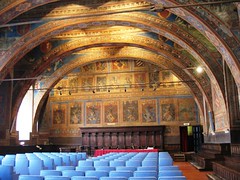
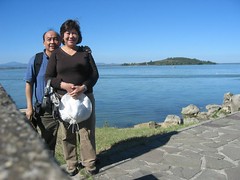


.jpg)
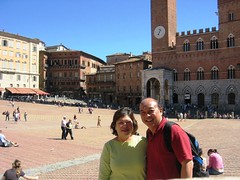

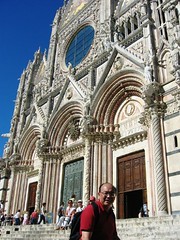
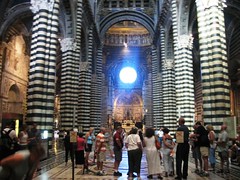

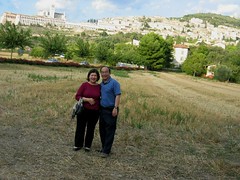



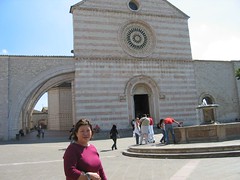
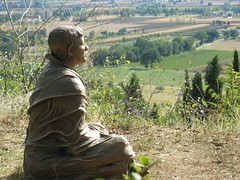

.jpg)

.jpg)
